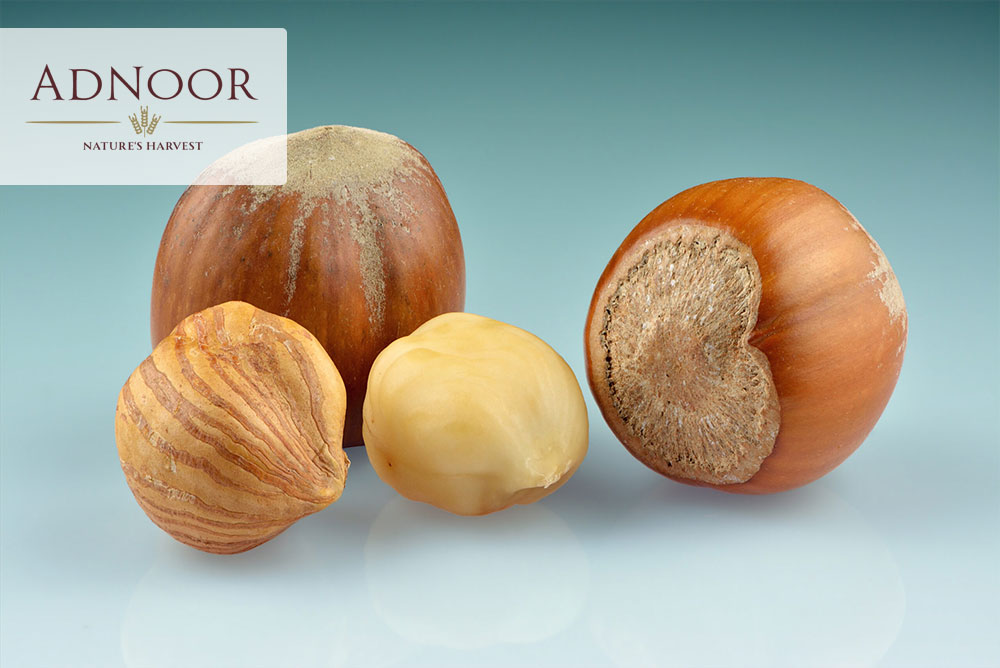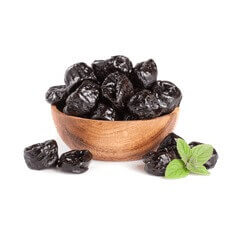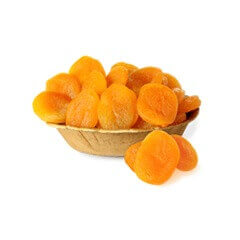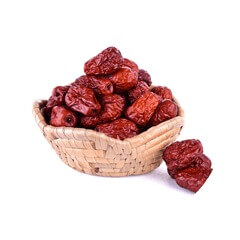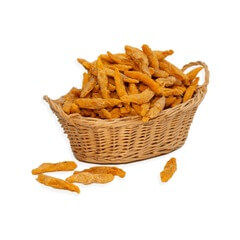The hazelnut is a small fruit that grows on the common hazel, a tree that can reach up to 8 meters in height. It is a nut, like walnuts, peanuts and almonds. Turkey is the biggest supplier, then Italy and France, Corsica and the Eastern Pyrenees are also good producers. The harvest of the hazelnuts is done at the end of the summer.
Learn More About The Plant “Hazel.”
The hazel tree is a well-known tree and belongs to the Betulaceae family. It would be native to the temperate zone of the northern hemisphere, around the Dead Sea. The hazel tree colonizes forest edges and clearings and appreciates rich soils. This shrub measures 2 to 5 m, its trunk is greyish, and its leaves are short petiolate. The flowers are born from January to March, long before the leaves. The hazel tree is monoecious: it has male flowers, which form hanging yellowish catkins, and female flowers, inconspicuous, in a gray bud where only the red stigmas are shown at their tops.
The hazel tree bears fruit at the end of summer. Its fruit, the hazelnut, is an achene protected by a tough shell. In 2017, more than one million tons of Hazelnuts were produced worldwide, with Turkey being the main producer (65%), followed by Italy. Truffle growers also appreciate the hazelnut tree: certain hazelnut plants are said to be “mycorrhizal,” that is, they are capable of producing truffles under certain conditions.
How to Eat Hazelnuts?
Hazelnuts can be eaten as is, for breakfast, as a snack, or added to a dish (mixed salad, sautéed vegetables, rice pilaf, etc.) for more indulgence. Crushed and mixed with breadcrumbs, they liven up chicken and fish fillets. Roasted in the oven (about ten minutes at 180°), they are delicious as an aperitif. You can also add it to homemade bread, a savoury or sweet cake, a fruit pie or a compote.
The hazelnut also exists in the form of a vegetable drink. Available in stores, you can also make it yourself:
- Soak about half a cup of hazelnuts in a bowl of water overnight.
- When you wake up, empty the soaking water and blend the fruit in a blender with the equivalent of two cups of water.
- Add honey, agave or maple syrup to your liking, and the drink is ready.
It will then keep for two to three days in the refrigerator.
In shops, you will also find it in the form of oil: particularly fragrant and tasty; it is favoured by gourmets who use it to make vinaigrette sauce or to decorate a dish of pasta, grilled vegetables or a fillet of fish.
Be careful, however; this oil cannot be cooked, and in order to avoid it going rancid, it must be kept in the refrigerator.
Finally, as an alternative to butter on your sandwiches, try hazelnut paste or hazelnut puree. You can prepare it yourself by passing your oven-roasted hazelnuts in a blender for a long time. Over time, they release their fatty acids to form a nutrient-rich paste. You can also add other oilseeds, such as sesame seeds, almonds or pumpkin seeds, for an original recipe.
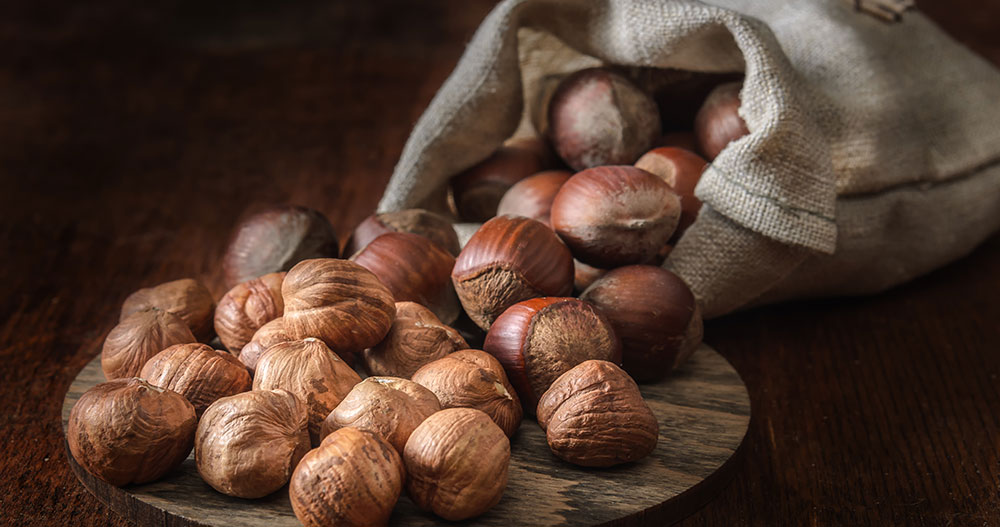
Hazelnut, a Fruit Rich in Nutrients
- The hazelnut is known to be one of the oilseeds richest in omega-9 (against bad cholesterol).
- It is a source of manganese and copper, substances that protect us from damage caused by free radicals.
- It contains phosphorus, a mineral essential for the health of bones and teeth.
- It contains vitamin E, which strengthens our immune system, vitamin B1, good for growth; vitamin B6, which contributes to the metabolism of proteins and fatty acids. Vitamin B9 (or folate) is essential for the production of body cells.
- Its magnesium content makes it an effective weapon against stress.
- It has an interesting amount of iron actively participating in the transport of oxygen and the formation of red blood cells in the blood. It should be noted here that the absorption of iron is favoured by the consumption of foods rich in vitamin C.
- Note also the presence of zinc in the hazelnut, which is beneficial at different levels (healing, development of the fetus, etc.).
The Hazelnut, a High-Energy Product
Hazelnuts are not only packed with good nutrients, but they are also very energetic (683kcal/100g) and therefore recommended for athletes. For example, it should be combined with other oilseeds (almonds, walnuts) and raisins for a suitable snack.
On the other hand, hazelnut is not recommended for overweight people because of its high-calorie content.
Note here that, unfortunately, like other nuts, hazelnuts contain multiple allergens. Under a European directive, it must be declared on the labels of industrial products.
How to Roast Hazelnuts?
If hazelnuts can be eaten without any preparation, they can also be eaten roasted, that is to say, roasted dry. The hazelnut is roasted most of the time in the oven. For this, the shelled hazelnuts are to be placed in the oven at 180 degrees on a baking sheet covered with parchment paper. Leave them for ten minutes, and then mix everything together. Stop cooking when the hazelnuts have a nice brown colour. You can then rub the hazelnuts to remove the skin. You can roast the hazelnuts in a pan if you don’t have an oven.
Health Benefits of Hazelnuts
Hazelnuts Are High In Protein.
With a protein content of 17%, hazelnuts are an alternative to the consumption of animal products. It contains good quality proteins since this oilseed contains the eight acids essential to our body, specifies dietitians-nutritionists. The hazelnut is thus particularly interesting for vegetarians and vegans but also for all those who wish to reduce their consumption of meat and fish products. Thanks to this richness, it is also recommended for athletes as a recovery snack.
Hazelnuts Are Sources Of Fibre.
The hazelnut is particularly well endowed with fibre since it contains 11.6% of these food substances that are so precious for the body and health: fibre promotes good intestinal transit, provides a feeling of quick and lasting satiety, nourishes our intestinal microbiota, participates in the fight against cancers, including those of the colon, breast and stomach, and play a role in good health of our heart by reducing the level of bad blood cholesterol.
Hazelnuts Contain Good Lipids.
With a contribution of 56.9% of lipids, hazelnut is rich in fat. Only it contains more good lipids: it contains only 4.75% saturated lipids, while the rest are unsaturated lipids, in other words, particularly beneficial to cardiovascular health. They have the property of reducing the level of “bad” cholesterol and LDL and increasing the “good” HDL. “Their consumption thus contributes to the fight against hypercholesterolemia and helps to keep cardiovascular conditions such as heart attacks and strokes at bay.
Hazelnuts Are Remineralizing
The advantage of this little nut? Its great richness in minerals. The hazelnut contains no fewer than 11 different ones, including copper. 100 g of hazelnuts cover all of our needs for this trace element with anti-infectious and immunostimulant properties, which allows us to spend the cold season protected from winter ailments.
The hazelnut also brings us phosphorus and anti-fatigue iron.
Another advantage is that 100 g of this small nut provides us with almost half of our magnesium needs. “Among its many benefits: it fixes calcium in the bones, it regulates blood sugar levels allowing us to prevent type 2 diabetes, it facilitates muscle contraction, it normalizes heart rate and blood pressure playing thus an important role in the prevention of cardiovascular disorders, and it ensures the proper functioning of intestinal transit. Its deficiency, therefore, exposes us to many health problems, such as sleep disorders, low morale or hypersensitivity to stress. Finally, it is also an interesting source of calcium, which is essential for bone strength.
Hazelnut Is Rich In Vitamins.
Apart from vitamin B12, the hazelnut provides us with all the vitamins of group B, including vitamin B1, which contributes to the proper functioning of the nervous system, vitamin B2, which reduces fatigue and vitamin B5, which helps to operate our small gray cells.
The hazelnut is particularly interesting for pregnant women because it also contains vitamin B9, which helps prevent fetal malformations.
Finally, the hazelnut also provides vitamin D, an immunostimulant useful for fixing calcium in the bones and which helps us prevent complications linked to Covid-19, as well as vitamin E with antioxidant properties.
Other Benefits of Hazelnut
Particularly nutritious and satiating thanks to its good protein and fibre content, the hazelnut is a small nut to include in our breakfasts, our meals or our snacks to fill up with good nutrients. Although caloric, the fibre-protein duo allows the hazelnut to stall us for a long time, preventing us from cravings during the day. The hazelnut is an asset to monitoring our figure and is consumed in moderation (a portion of 30 g is enough).
Its fats, mostly unsaturated, have a positive impact on cardiovascular health since they have the property of reducing the bad cholesterol (LDL) level while increasing the good one: according to a compilation of 25 studies carried out in 2010, the consumption of hazelnuts would lower total cholesterol levels by 5% and LDL 1 levels by 7%. They are helped in their task by the presence of fibres, food substances which trap particles of dietary cholesterol and eliminate them by natural means.
Its richness in antioxidant vitamin E also makes it an ally in helping to prevent premature aging of body cells, the appearance of certain cancers, heart problems and neurodegenerative diseases, such as Alzheimer’s and Parkinson’s.
Its “good fats” content is associated with potassium, a nutrient that fights against high blood pressure, and magnesium, a mineral that normalizes heart muscle contractions, making this small oleaginous fruit a heart asset. As a bonus, the fibres make it possible to eliminate the bad cholesterol present in the diet, thus participating in keeping cardiovascular risks at bay, such as infarction or Cerebral Vascular Accident (CVA).
Finally, thanks to the presence of iron, selenium, zinc, vitamins E and C, and nutrients with antioxidant properties, the hazelnut helps protect the body from damage caused by free radicals. These would be linked to the development of cardiovascular diseases and cancers.
Are Hazelnuts Good For The Line?
Admittedly, they are rich in fat and calories (628 Kcal per 100 g). But for all that, they are not to be banned when one monitors his line. “Thanks to their fibre and protein content, as well as their low Glycemic Index (20), hazelnuts are particularly satiating and prevent us from cravings during the day”, specifies our expert. With a small handful (about 30 g), they fit perfectly into a slimming diet.
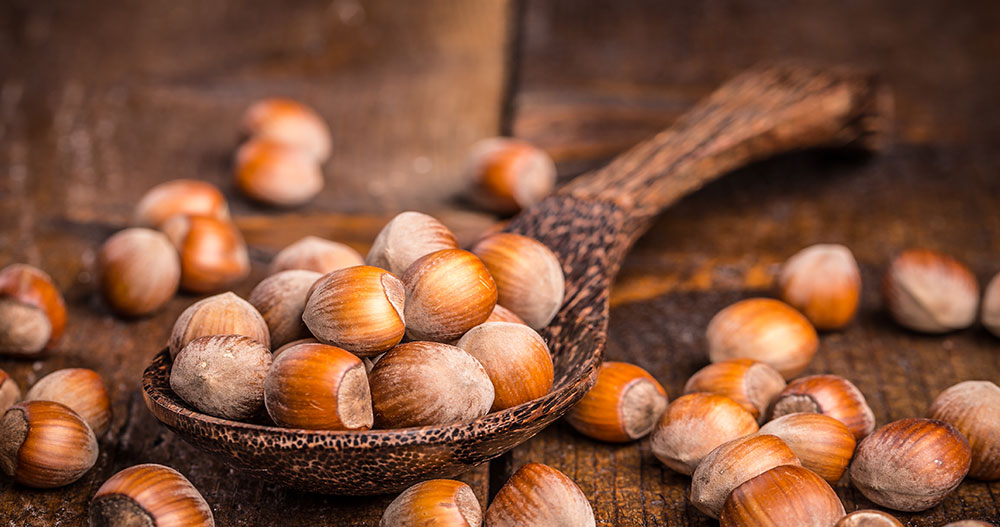
What Are The Contraindications?
It is a recognized allergen. The hazelnut can cause allergic reactions and should, therefore, not be consumed by sensitive people. “It is recommended that people allergic to peanuts abstain from eating nuts. The symptoms can be simple (itching, red patches and erythema, etc.) up to anaphylactic shock, a very serious reaction”, specifies Raphael Gruman.
Due to its high oxalate content, the hazelnut should be consumed in moderation by people with kidney problems. Finally, it also contains vitamin K: at high doses; this is contraindicated for people on anticoagulant treatment.
Sometimes called “filbert,” the hazelnut belongs to the oilseed family. Like almonds, walnuts, pine nuts or pistachios, it is a fruit rich in fatty acids from which oil can be extracted. Focus on the hazelnut, a treasure of benefits.
The shell of the hazelnut is not edible; the kernel it contains, yes. It can be eaten plain, like dried fruit, or used to make various pastries and sweets. It is therefore crushed, cut into shavings, grated or reduced to powder.
Adnoor is the ideal platform to get the best quality hazelnuts, dried fruits, basmati rice, and seeds. We provide the best Wholesale Dried Fruits in Canada and have continued this legacy for the last 25 years. We aim to provide our customers with the best quality products so they keep visiting us.

